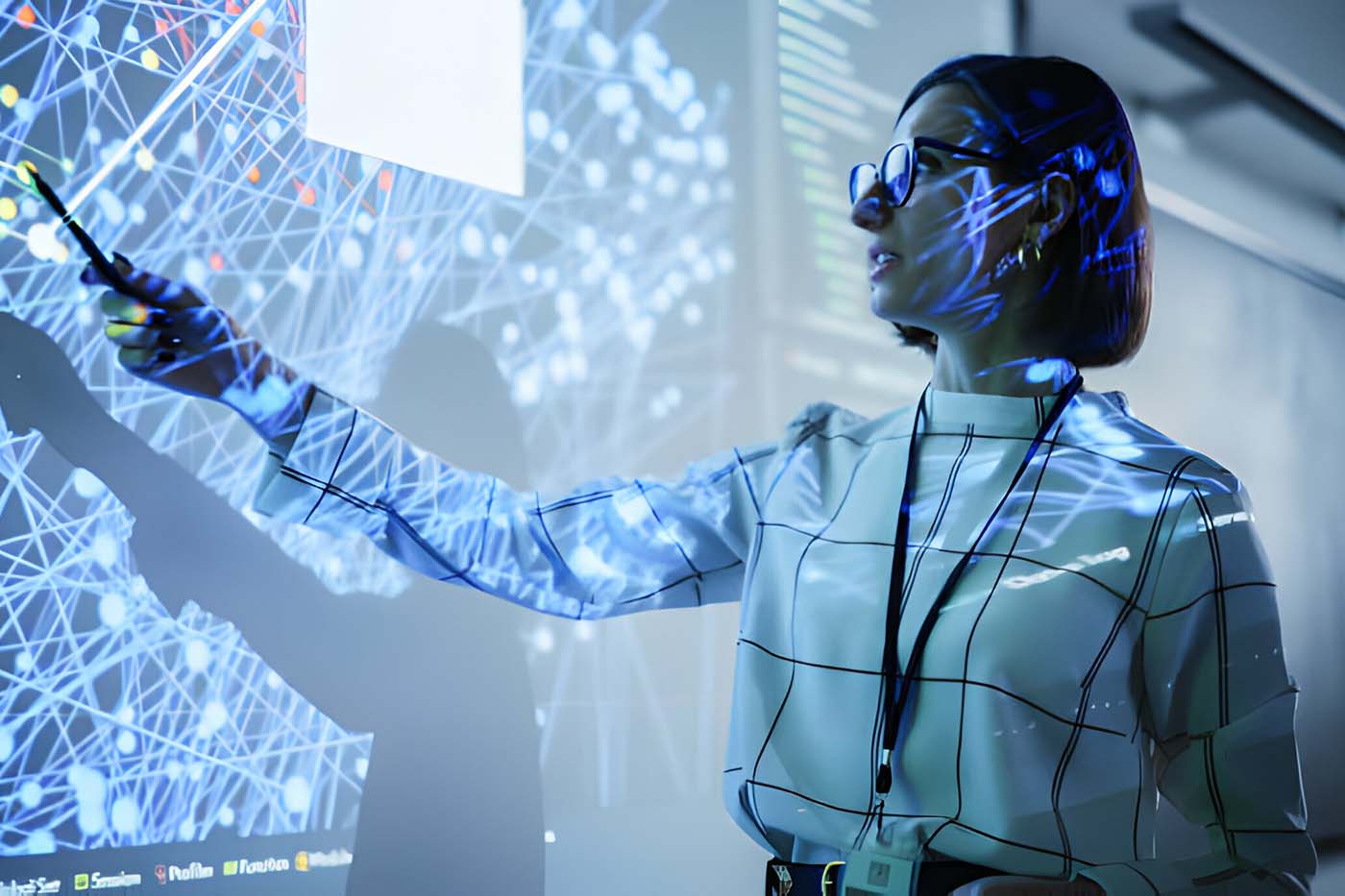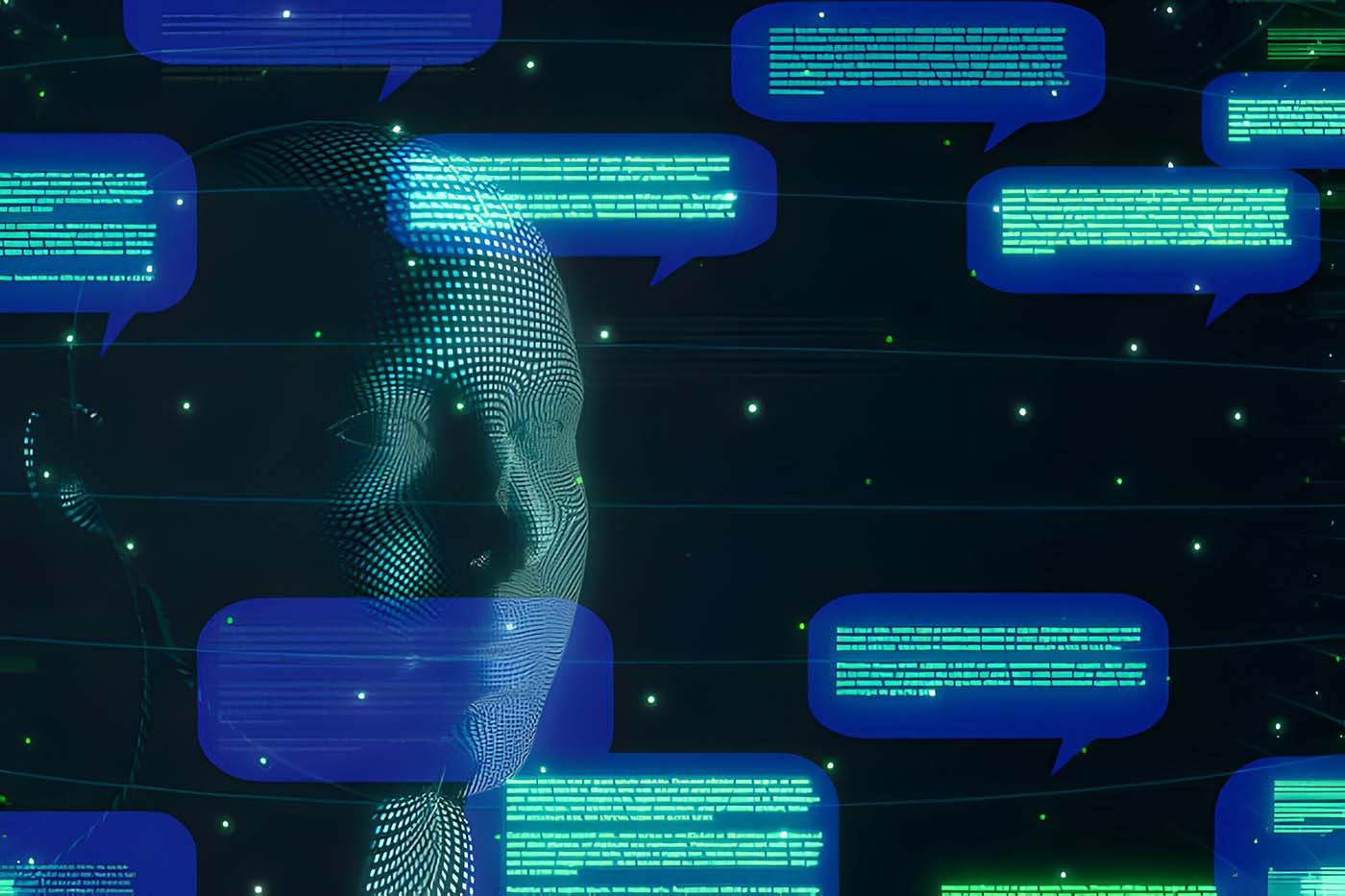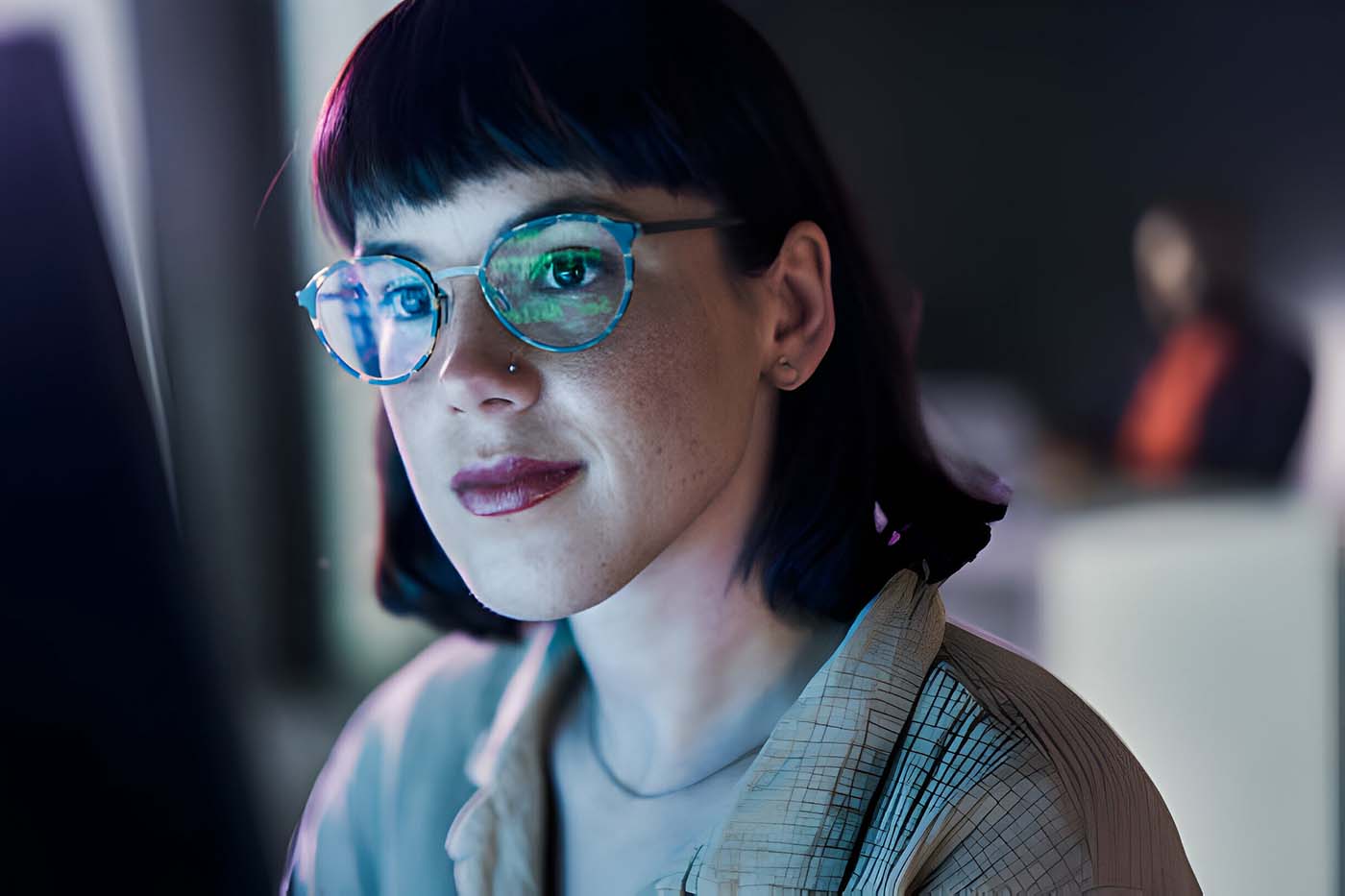Artificial Intelligence (AI) chips now power some of the world’s most essential industries, from healthcare to defense, with North America leading the global market. As designers, creators, and the rest of us find our way in this brave new world, it becomes imperative to scrutinize the implications and impact of creation itself on humanity.
More importantly, with the future of the design field intricately woven into the evolving relationship between AI and humans, our collective responsibility is to guide this partnership toward a future that is ethical, inclusive, and deeply resonant with the essence of our natural creativity. This article sifts through that multifaceted relationship, attempting to decipher AI’s place and the profound questions it raises.

The Rise of AI
The world’s affinity for AI is rooted in the film industry, with unforgettable characters like the literally heartless Tin Man from The Wizard of Oz (1939) and the humanoid robot Maria, in Germany’s Metropolis (1927). These films planted the concept of AI in the minds of a whole generation of scientists, mathematicians, and philosophers, including Alan Turing, a young polymath from Britain who first exploited the mathematical possibility of AI.
Since then, advancements in computing power and the accumulation of massive datasets have relentlessly paved the way for AI’s evolution over the decades. The quest for machines that mimic human intelligence fueled research in diverse fields, resulting in breakthroughs such as natural language processing and the development of neural networks.
Remarkably, AI’s integration into design and creativity – a realm once believed reserved for native human intelligence – has become a catalyst for efficiency and innovation. Designers now leverage AI tools to analyze consumer behavior, anticipate trends, and create personalized experiences.
Automating routine, time-consuming tasks allows designers to allocate more time to creative endeavors, fostering a symbiotic relationship between human ingenuity and machine precision. The widespread adoption of AI in industries like graphic design, architecture, and fashion underscores its transformative impact.
The appeal of AI obviously lies in its ability to augment human capabilities, enhancing productivity and pushing creative boundaries. As designers continue to harness the power of AI, the technology is set to redefine the creative landscape, offering novel solutions to age-old challenges. However, despite today’s massive use of AI in design, its popularity has raised pertinent ethical questions in various aspects of its application.

The Impact of AI on the Design Industry
AI is revolutionizing the design industry, ushering in transformative changes that reshape creative processes and outcomes. Its impact extends beyond mere efficiency gains, influencing how designers conceive, create, and deliver innovative solutions.
Enhanced creativity and ideation
AI is waging a design revolution, unleashing its potential to analyze vast datasets and unveil emerging design trends. With AI’s insights, designers gain a profound understanding of consumer preferences and market demands.
As a result, the research phase speeds up while liberating creative energy, allowing designers to immerse themselves in ideation and generate novel concepts. The symbiosis between AI analysis and human creativity drives a more informed, inspired, and innovative design process.
Automated design processes
AI-powered tools are indispensable allies, automating repetitive and time-consuming tasks that often impede creativity. Whether resizing images, creating templates, or generating design variations, AI’s automation prowess accelerates workflow efficiency.
In turn, such newfound efficiency empowers designers to dedicate more time to strategic thinking, refining designs, and addressing nuanced aspects that demand human expertise. This partnership between AI automation and human ingenuity enhances productivity and elevates the overall quality of design outcomes.
Personalized user experiences
AI’s capacity to process and interpret user data marks a paradigm shift in the creation of personalized design experiences. From website interfaces to product designs, AI algorithms meticulously analyze user behavior to tailor designs, making them visually appealing and more relevant and engaging for individual users.
Beyond a technical feature, this personalization is a powerful tool that enhances user satisfaction and strengthens brand connections. The dynamic relationship between AI and user data sets the stage for a personalized design landscape that caters to each individual’s unique preferences.
Predictive design insights
The integration of AI predictive analytics into the design process revolutionizes the way designers approach their craft. By forecasting design outcomes based on historical data and user interactions, AI provides designers with a roadmap for informed decision-making.
With this predictive capability, designers can minimize guesswork and create more audience-resonant designs. In essence, AI becomes a strategic partner in the design journey, offering valuable insights that guide designers toward creating impactful and successful designs.
Collaboration and co-creation
AI transcends its role as a tool and transforms into a collaborative partner in the design ecosystem. By offering real-time suggestions, feedback, and ideation support, AI facilitates seamless collaboration within design teams. Integrating AI tools enhances communication, streamlines collaboration, and ensures the harmonious integration of diverse ideas.
The resulting dynamic and inclusive design environment not only leverages human creativity but also fuses it with AI-driven insights, resulting in more comprehensive and innovative design solutions. The collaborative potential of AI in design processes signifies a paradigm shift in how teams work together to achieve shared creative goals, heralding a new era of creativity and innovation.

The Dilemma of Biases in AI-Driven Design
As AI assumes a central role in design, ethical dilemmas emerge, spotlighting the moral considerations surrounding technological advancements. One prominent concern revolves around the issue of bias embedded within machine-learning AI algorithms.
Often trained on vast amounts of data, these algorithms may inadvertently perpetuate societal biases that potentially reinforce discriminatory practices. Designers find themselves grappling with the weighty responsibility of mitigating bias, necessitating a meticulous approach to ensure that AI design tools uphold principles of fairness and inclusivity.
Common AI biases in the design industry
AI biases introduce challenges which impact most industries that use it. In the creative sphere, algorithms can inadvertently favor design elements rooted in dominant cultural perspectives, including gender dispositions. Two other types of biases that may occur in AI design applications are temporal bias, which is influenced by historical trends, and socioeconomic bias, which leans towards certain economic classes.
In any case, AI biases perpetuate stereotypes and marginalize certain groups, automatically diminishing the integrity of the AI’s output. AI bias in the design industry can manifest in various applications, such as automated logo design platforms, website theme generators, print design templates, branding strategy platforms, typography suggestion tools, and facial recognition software.
To mitigate biases in AI-driven design applications, businesses should adopt a proactive approach. First and foremost, fostering awareness among design teams about the existence and potential impact of biases is crucial. Training designers to critically evaluate and question algorithmic suggestions can help identify and rectify biased outcomes.
Additionally, incorporating diverse datasets encompassing a broad range of cultural, gender, temporal, and socioeconomic perspectives can enhance algorithmic training, reducing the risk of perpetuating historical biases.
Regularly updating algorithms based on evolving design preferences and embracing user feedback can further contribute to the refinement of AI applications, ensuring they align with contemporary and inclusive design standards. Collaborative efforts with ethicists, diversity and inclusion experts, and user communities can provide valuable insights for addressing biases and promoting fair and equitable design practices within the AI landscape.
Accountability in design AI biases
The ethical implications extend beyond bias to the critical question of accountability. When AI-generated designs yield unintended consequences, a complex web of responsibility emerges. Establishing clear and comprehensive ethical guidelines for integrating AI systems into design becomes imperative. Such guidelines are essential not only to prevent the unintended propagation of biases but also to safeguard against the misuse of technology.
In AI-driven design, embedding transparency and accountability is crucial. This entails clearly defining roles and ensuring accountability for both human designers and AI algorithms. A transparent decision-making process, accessible rationale for design choices, and regular audits identify and rectify issues promptly.
External audits and third-party evaluations offer unbiased perspectives, enhancing accountability. Prioritizing transparency, accountability, and ongoing ethical assessment enables businesses to uphold responsible AI practices, mitigating ethical concerns and building user trust.

Humanizing AI in Design
Beyond positioning AI technology as a mere substitute for human creativity, designers have been actively exploring ways to integrate AI as a collaborative tool. This paradigm shift toward human-AI partnerships promises an exciting future where the distinctive strengths of both human and artificial intelligence converge to achieve collaborative outcomes. It also enhances workflow and overall efficiency in design processes while nurturing a deeper connection between technology and humanity.
AI humanization can even benefit processes without any human touch, such as a lending platform screening personal loan applicants based purely on numerical metrics like debt-to-income (DTI) ratio, credit score, etc. By implementing a feedback loop that learns and adapts to individual circumstances, the lending company can gain a more refined understanding of financial situations, improve risk assessment processes and decision-making, and build trust.
To truly humanize AI, designers face the challenge of understanding and incorporating the emotional and cultural nuances that define human creativity. This endeavor involves infusing AI with empathy, cultural sensitivity, and acute context awareness, ensuring that AI-generated designs resonate authentically with human user experience.
The endeavor to humanize AI is not only a technological pursuit but also a cultural and psychological one, aiming to bridge the gap between the precision of machine algorithms and the nuanced richness of human expression. In this constantly shifting scenario, the emphasis on human-AI collaboration is a testament to the recognition that AI, when thoughtfully integrated, can augment and amplify human creativity rather than diminish it.
The Intersection of AI and Human Creativity
As we delve into the fundamental essence of creation, the integration of AI into the realm of design initiates a profound philosophical exploration. The very act of creating a new design undergoes a transformation as we confront the question: what does it mean to create when the process is shared with machines? The conventional image of the solitary artist crafting unique and unrepeatable works is challenged, with AI consistently generating designs that echo the nuances of human creativity.
This intersection triggers a compelling reevaluation of creativity itself. Can creativity truly be distilled into algorithms, or does it transcend the confines of computational logic? The collaborative dance between designers and AI compels a reconsideration of the boundaries defining creativity.
In this partnership, creativity is not solely the domain of human intuition but a fluid, symbiotic relationship where machines and humans contribute harmoniously to the creative process, both in virtual reality and the real world. This alliance expands the horizons of what is conceivable, whether in product design, user interfaces, web design, etc. As the line between creator and creation blurs, the integration of AI in design beckons us to reassess our understanding of the very nature of creativity.
AI-Driven Design and Its Impact on Future Designers
AI-driven design has the potential to significantly impact the current generation of children, who will inevitably become the designers of the future. Exposure to AI tools at an early age can foster a deep understanding of technology and its creative applications.
Educational platforms or frameworks leveraging AI-driven design enable children to explore innovative solutions, sparking curiosity and enhancing problem-solving skills. Moreover, AI’s ability to automate specific design projects can streamline the learning process, allowing young designers to focus on honing their creativity.
However, the influence of AI on children’s design solutions and capabilities raises concerns. The reliance on AI may inadvertently limit the development of essential skills, such as manual design proficiency and critical thinking, when confronted with complex problems. Striking a balance between utilizing AI and nurturing traditional design skills becomes crucial in cultivating well-rounded future designers.
Designing the Future of Design With Responsible AI
Ranked first on Techopedia’s latest list of the most advanced AI is Apptronik’s Apollo, a modular, all-around robot designed for warehouse and manufacturing environments and possibly other areas like construction and elderly care.
This synthesis between technology and human creativity is forging a path toward uncharted design thinking territories. As we deal with ethical dilemmas, redefine creativity, and dance to the delicate rhythm between AI and humanity, one resounding truth emerges: we must reevaluate our understanding of creation.
We must challenge our traditional beliefs and beckon ourselves to embrace the future of AI, where the positive reciprocity between humans and machines grows from the very core of the design industry.








